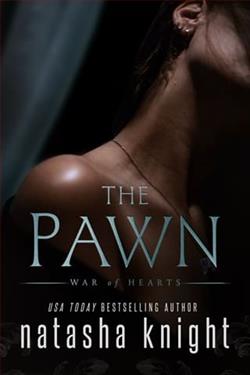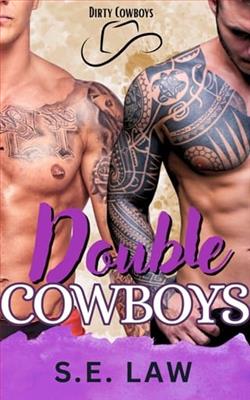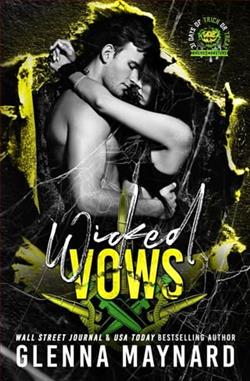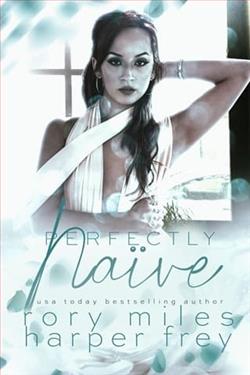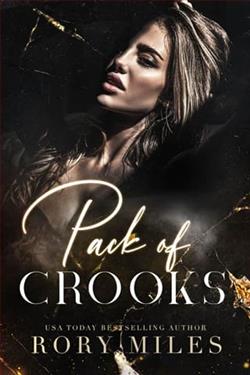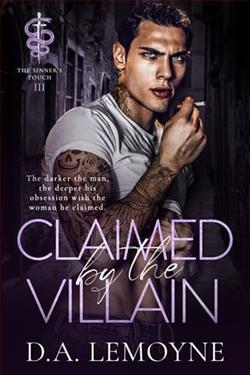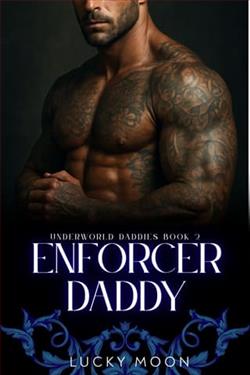Page 86 of The Seven Sisters
‘He made his name as a sculptor during the Second World War, in which he also fought as part of the Resistance,’ Floriano clarified. ‘His page on Wikipedia says he was honoured for bravery. Definitely a very interesting man. Here, this is a photograph of him. You might notice that he was certainly not unattractive,’ he added.
I studied Laurent’s handsome face. With his strong features, chiselled jaw and razor-sharp cheekbones, he looked distinctly Gallic.
‘And here are Gustavo and Izabela on their wedding day.’
I stared at the photograph, bypassing Izabela to look at Gustavo first. The contrast with Laurent could not have been more marked. His insubstantial physique, coupled with his small and pointed features, made me understand why Bel and Maria Elisa had likened him to a ferret. But I could see there was kindness in his eyes.
Then I glanced at Izabela, her features so like my own. And was about to put the photo down, when I noticed the necklace she was wearing.
‘Oh my God!’
‘What?’
‘Look.’ I indicated what Floriano should concentrate on in the photograph, my fingers instinctively clasping the moonstone around my own neck.
He studied both the picture and me carefully. ‘Yes, Maia. It seems they are one and the same.’
‘That was the reason Yara gave me the letters. She said she recognised the necklace.’
‘So now you finally believe you are related to the Aires Cabrals?’ He smiled at me.
‘Yes, I do,’ I said, genuinely convinced for the first time. ‘It’s irrefutable proof,’ I agreed.
‘You must be happy.’
‘I am, but . . .’ I put the pages down and sighed. Floriano lit a cigarette and stared at me.
‘What is it?’
‘She left the man she loved in France to marry Gustavo Aires Cabral, whom she didn’t. It’s very sad.’
‘You are a romantic, Maia?’
‘No, but if you’d read the letters Izabela wrote to her maid about her love for Laurent Brouilly, you couldn’t help but be moved by the story.’
‘Well, I hope you’ll allow me to do that very soon.’
‘Of course,’ I said. ‘Although, perhaps Izabela’s feelings for Laurent were just a crush and nothing more.’
‘True,’ he agreed. ‘But if so, why did your father give you that soapstone tile as a clue to your history? It would have been far simpler to have included a photograph of Izabela and her husband.’
‘I don’t know,’ I sighed. ‘And maybe I never will. I mean, I have no more letters after October 1928, when she left Paris and returned to Rio. So, I have to presume that she married Gustavo and settled down with him here.’
‘Actually, I don’t think thatwasthe whole story,’ Floriano said, producing another photocopied picture and passing it across to me. ‘That was taken in January 1929. It shows the plaster mould of theCristo’s head just after it had been taken off the ship that had brought it across from France. That strange-looking object next to it is actually a giant-sized palm of a hand. There are two men in this picture. One of them I recognise as Heitor Levy, the project manager for the construction of theCristo. Now look closely at the other man.’ Floriano indicated the figure with his finger.
I stared at the features of the man leaning against theCristo’s hand. I double checked it against the image Floriano had handed me only minutes earlier.
‘My God, it’s Laurent Brouilly!’
‘Yes, it is.’
‘So he was here in Rio?’
‘So it seems. I suppose it doesn’t take a genius to surmise that he was over here from France because of theCristoproject.’
‘And perhaps to see Izabela?’ I queried.
‘As an historian, one should never make such assumptions, especially as you’ve only read about Izabela’s feelings towards Laurent. We can’t be sure of how he felt about her,’ Floriano reminded me.








